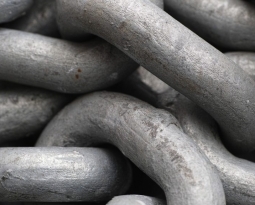North Dakota Patent of the Month – January 2023
Levees are a great engineering tool to prevent flooding. Formed both naturally and artificially, these embankments block water from going where we don’t want it to. Unfortunately, even a levee can leak. Cutoff walls are the go-to solution to prevent leakage, but permeability of materials used (such as concrete) and soil contamination of the concrete during the curing process can reduce the integrity and strength of the cutoff wall. These cutoff walls can also be damaged during seismic events.
Levee Lock, LLC (LeveeLock) has designed a cutoff wall that will no longer be limited by permeability and seismic forces. Their newly patented design is a membrane-lined wall which replaces the traditional materials, like concrete, with steel-reinforced concrete. The steel reinforcement makes the wall resistant to seismic forces, ensuring it will stand strong in any event. The double lining of a geotextile barrier creates an absolute waterproof barrier.
The membrane-lined wall is formed by excavating a trench along the top or slope of a levee, installing a low-permeability geotextile membrane liner, followed by the steel reinforcement mat. The interior portion of the liner is then filled with cementitious material, such as concrete, which hardens and adds structural integrity to the wall. For added integrity, vibration may be applied to the cementitious material during the hardening process to remove air and prevent honeycombing.
Not only is the membrane-lined wall useful for reinforcing levees, it also serves as a barrier to prevent the migration of water or liquid contaminants, making it ideal for use around the perimeter of waste disposal sites and coal slurry impoundments. Preventing this leakage offers environmental protection for the surrounding environment.
Are you developing new technology for an existing application? Did you know your development work could be eligible for the R&D Tax Credit and you can receive up to 14% back on your expenses? Even if your development isn’t successful your work may still qualify for R&D credits (i.e. you don’t need to have a patent to qualify). To find out more, please contact a Swanson Reed R&D Specialist today or check out our free online eligibility test.
Who We Are:
Swanson Reed is one of the U.S.’ largest Specialist R&D tax advisory firms. We manage all facets of the R&D tax credit program, from claim preparation and audit compliance to claim disputes.
Swanson Reed regularly hosts free webinars and provides free IRS CE and CPE credits for CPAs. For more information please visit us at www.swansonreed.com/webinars or contact your usual Swanson Reed representative.

















